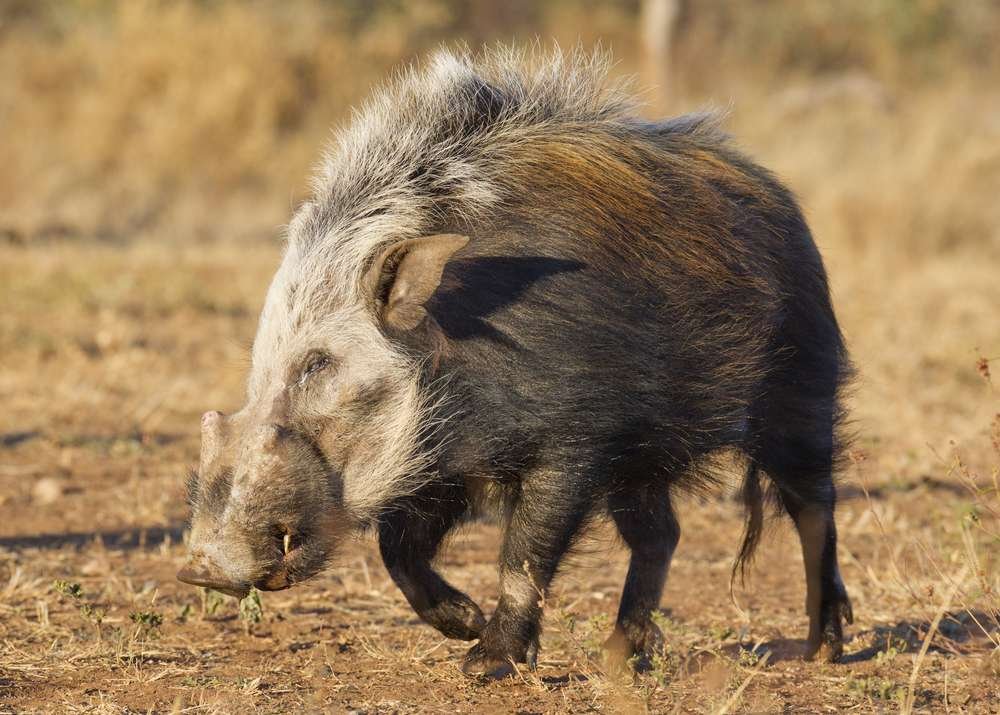Bushpig
- Potamochoerus larvatus
- IUCN Status: Least Concern
- Trend: decreasing

- Kingdom: Animalia
- Phylum: Chordata
- Class: Mammalia
- Order: Artiodactyla
- Family: Suidae
- Genus: Potamochoerus
Share:
General Information
The bushpig is a large wild pig that is found in urban areas, forests, woodlands, and savannas throughout Zambia.
Fun Facts!
Bushpigs are an important part of the Zambian ecosystem. They help to control insect populations, and they are a food source for predators such as lions, leopards, and hyenas.
Description
- Length: 1.7 meters
- Weight: 130 kg
Ecology and Behaviour
Bushpigs are most active at night, spending the day resting in thickets or under trees. They are omnivores, and their diet consists mainly of grasses, leaves, roots, fruits, insects, and small mammals. They are social animals and live in groups of up to 20 individuals. They are most active at night and spend most of their time foraging for food. Bushpigs are also very vocal animals and communicate with each other using a variety of calls. Bushpig will range up to 4 km from their hide in a night to feed.
Conservation
It is listed as a “least concern” on the International Union for Conservation of Nature (IUCN Red List. Bushpigs are not considered to be threatened in Zambia, but their populations are declining due to habitat loss and poaching. It is important to protect bushpigs and their habitat so that they can continue to play their vital role in the ecosystem.
Distribution and Habitat
Interaction with humans
Bushpigs are very aggressive and extremely powerful. In one case, a game scout was forced to spend three days in a tree, avoiding a stalking bushpig. Wounded bushpig are very dangerous; their spoor should not be followed alone. They are fast, and can swim well.
No donation to this project yet.
| M | T | W | T | F | S | S |
|---|---|---|---|---|---|---|
| 1 | 2 | 3 | 4 | 5 | 6 | 7 |
| 8 | 9 | 10 | 11 | 12 | 13 | 14 |
| 15 | 16 | 17 | 18 | 19 | 20 | 21 |
| 22 | 23 | 24 | 25 | 26 | 27 | 28 |
| 29 | 30 | 31 | ||||


